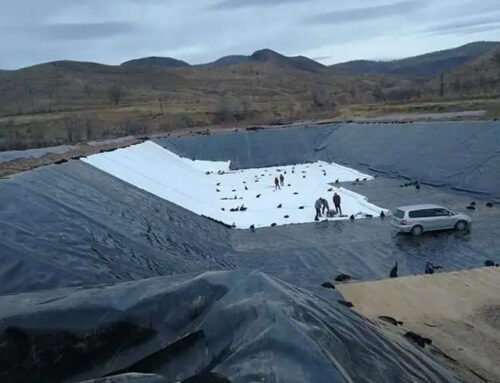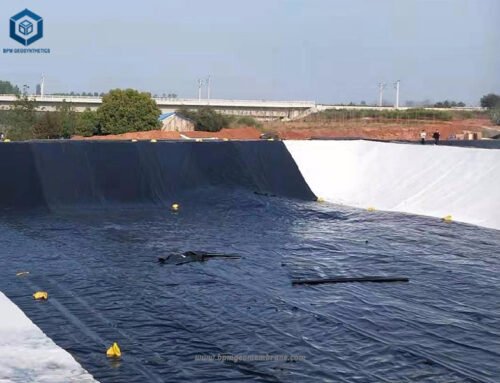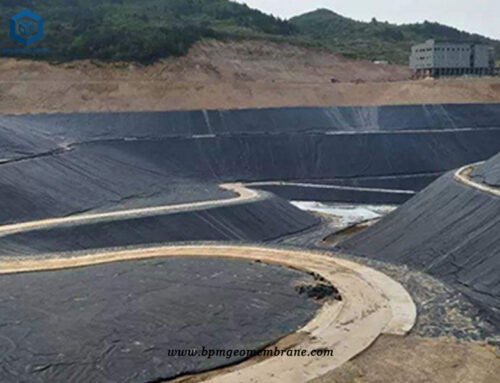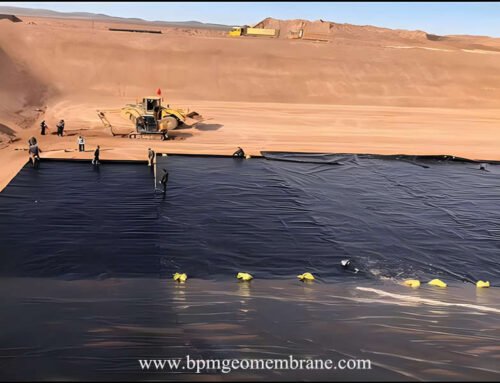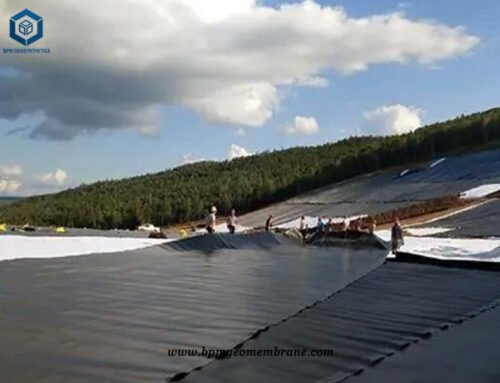Landfill geomembrane liner is a type of geomembrane used for anti-seepage and containment in landfills. Landfills are designed to safely store and dispose of waste materials, including hazardous materials. However, if the landfill is not properly constructed, managed, or maintained, the waste materials can pollute the surrounding environment, including soil, water, and air.
Landfill geomembrane liners are generally categories smooth geomembrane liner, textured geomembrane liner, and composite geomembrane. The HDPE geomembrane is fabricated using high-density polyethylene (HDPE), low-density polyethylene (LDPE), linear low-density polyethylene (LLDPE), or other synthetic materials. These materials possess exceptional chemical resistance, weather resistance, and durability, which are crucial for ensuring the long-term effectiveness of the landfill.
Installed as part of a HDPE geomembrane liner system, the landfill geomembrane liner acts as a barrier, preventing waste materials from contacting the surrounding environment. Alongside the geomembrane liner, the liner system includes a geotextile layer and a drainage layer. These components work together to enhance the overall anti-seepage performance of the landfill.
By utilizing materials with excellent resistance properties, the landfill geomembrane liner effectively safeguards against potential contamination and leakage. The geotextile layer helps prevent punctures and provides additional reinforcement, while the drainage layer aids in the proper management of leachate within the landfill. Collectively, these components contribute to the overall integrity and efficiency of landfill operations.
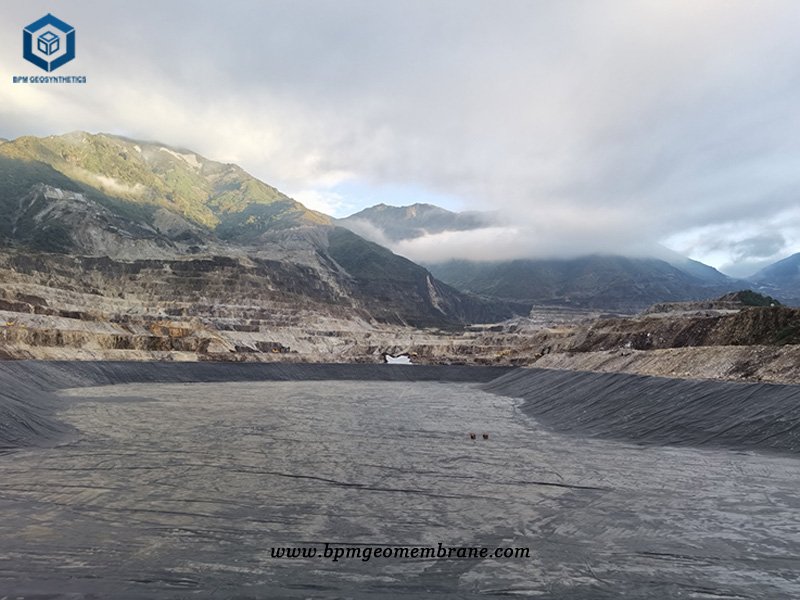
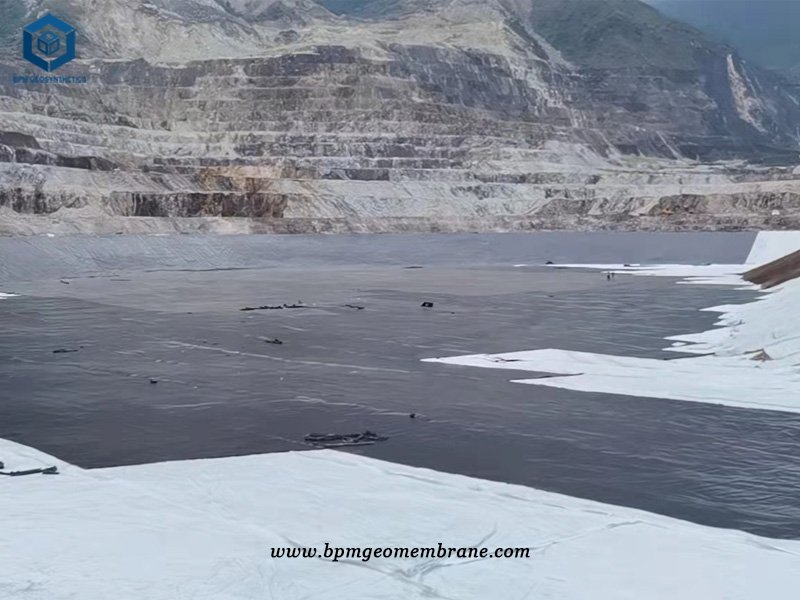
Why Chose BPM Landfill Geomembrane Liner for Mining Project in Peru
The mining industry in Peru is a pillar industry in the country. After a large amount of mining resources are mined, a large area of tailings will be left behind. However, tailings also have significant safety hazards, and tailings treatment has become one of the most difficult problems for Peruvian mining companies to deal with.
The tailings material is in a plastic flow shape and is prone to dam failure, which has received high attention from the global community. The collapse of tailings ponds can cause significant casualties, property damage, and environmental pollution, which has sounded an alarm for the standardized disposal of tailings. In 1972, a dam break occurred in the Buffalo River coal sludge reservoir in the United States, resulting in 125 deaths, 4000 displacements, serious damage to surrounding bridges and roads, and property losses of more than 60 million dollars; In 2019, Vale S.A.’s tailings dam broke, causing more than 350 deaths or missing. From this, it can be seen that tailings inventory poses significant safety hazards and environmental risks, so strict control must be implemented during the construction of tailings ponds. Backfilling the goaf of a mine is one of the effective ways to directly utilize tailings. By using tailings as filling materials, local materials can be obtained and waste can be utilized. This not only solves the problem of environmental pollution caused by tailings discharge, reduces the economic burden on relevant enterprises, but also saves or greatly reduces the construction and operation costs of tailings ponds. The storage of tailings requires a large amount of land occupation, and some tailings contain heavy metal pollutants, which can also cause harm to the environment. The large amount of tailings generated after metal mining needs to be transported to fixed stacking areas. However, during the transportation process, due to leakage, wind and other effects, some tailings diffuse into the surrounding environment, causing pollution to the surrounding soil, water, and atmosphere. In tailings ponds, most tailings have a high moisture content and will produce a large amount of waste liquid after long-term accumulation. Once the waste liquid is not thoroughly treated and enters the surrounding environment, it will cause serious pollution.
At present, the Peruvian government requires mining companies to vigorously promote the construction of green mines, so it is of great significance to properly handle tailings resources. Adding an anti-seepage layer to Peru’s tailings is the most important component of the tailings backfilling system. HDPE landfill geomembrane, due to its low permeability coefficient and good anti-seepage performance, is far lower than the permeability coefficient of clay, greatly reducing the difficulty of construction and accelerating the construction speed during laying. The tensile resistance of HDPE anti-seepage landfill geomembrane liner is better than that of clay, and its maximum tensile deformation index is much less sensitive to uneven settlement of the landfill site than clay. As the main material of the anti-seepage layer, it reduces the amount of rainwater that seeps into the tailings pond, achieving the goal of reducing the amount of leachate produced; Pour concrete around and build drainage ditches to effectively guide and drain rainwater from the entire landfill site, prevent it from seeping into the ground, and achieve the diversion of rainwater and sewage from the landfill site. After the reservoir coverage system is completed, planting green plants can achieve green mining and optimize the ecological environment.
How To Order BPM Landfill Geomembrane Liner
Before purchasing landfill geomembrane liner, Peruvian mining companies conduct a comprehensive screening of geomembrane manufacturers and select BPM company as the main HDPE liner manufacturer. After BPM is produced, professional GAI-LAP testing reports are provided to mining companies, and each production undergoes strict mechanical properties and durability testing, meeting relevant international technical standards. Every step of BPM from raw materials to production requires quality inspection and strict implementation of storage standards to avoid affecting future engineering construction due to product quality issues. Ensure that the geomembrane is not damaged, contaminated, damp, rainwater, or exposed to prolonged sunlight during transportation and storage. The Peru tailings engineering project has purchased BPM1.5mm and 1.0mm smooth geomembranes, totaling over 1000000 square meters. The BPM brand landfill geomembrane has been highly praised in the Peruvian market for its excellent quality and competitive price.
Specifications of BPM Landfill Geomembrane Liner for Mining Project in Peru
- Landfill Geomembrane LinerThickness – 1.5mm and 1.0mm
- Total Quantity – 1,120,000 Square meters
- Each Roll Size – 7m*140m & 7m*210m
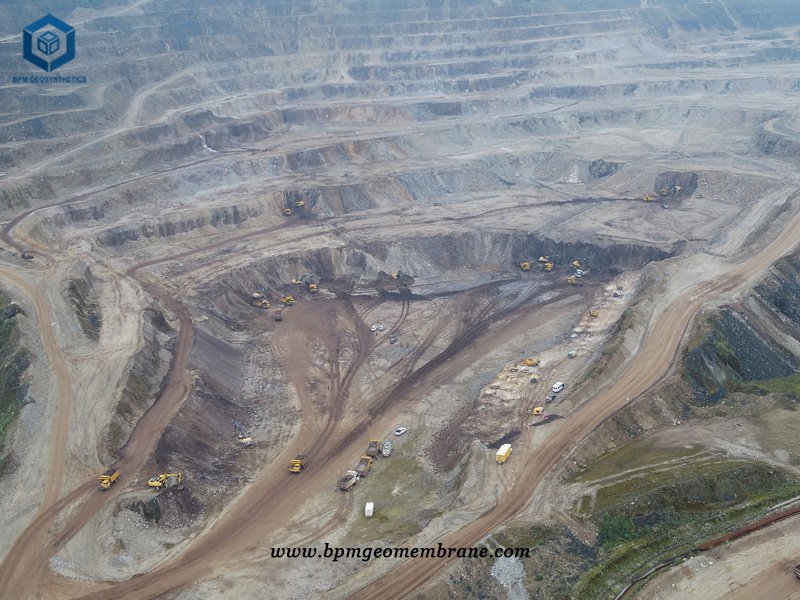
About BPM
BPM has been specializing in delivering complete line of geosynthetics products and solutions to worldwide customers since its foundation in 2007. BPM had provided many types of effective and state of the art geomembranes, geotextiles, geocells, geosynthetic clay liners (GCLs), drainage boards, geogrids to over 81 countries. Our main customers are from Australia, France, Sweden, UK, Hong Kong, Hungary, New Zealand, Poland, Mexico, Ecuador, Brazil, Pakistan, Bangladesh, Thailand, Vietnam, Malaysia, Indonesia, Singapore, Philippines, Sri Lanka, India, UAE, Saudi Arabia, Qatar, Kenya, Ghana, Ethiopia, Somalia, Nigeria, South Africa, Swaziland, Mongolia, etc.
BPM is not only manufacturing best quality geosynthetic products but also providing professional design and installation service. OEM, ODM, custom development and fabrication are also available. If you have any questions or inquiries, please contact us.

